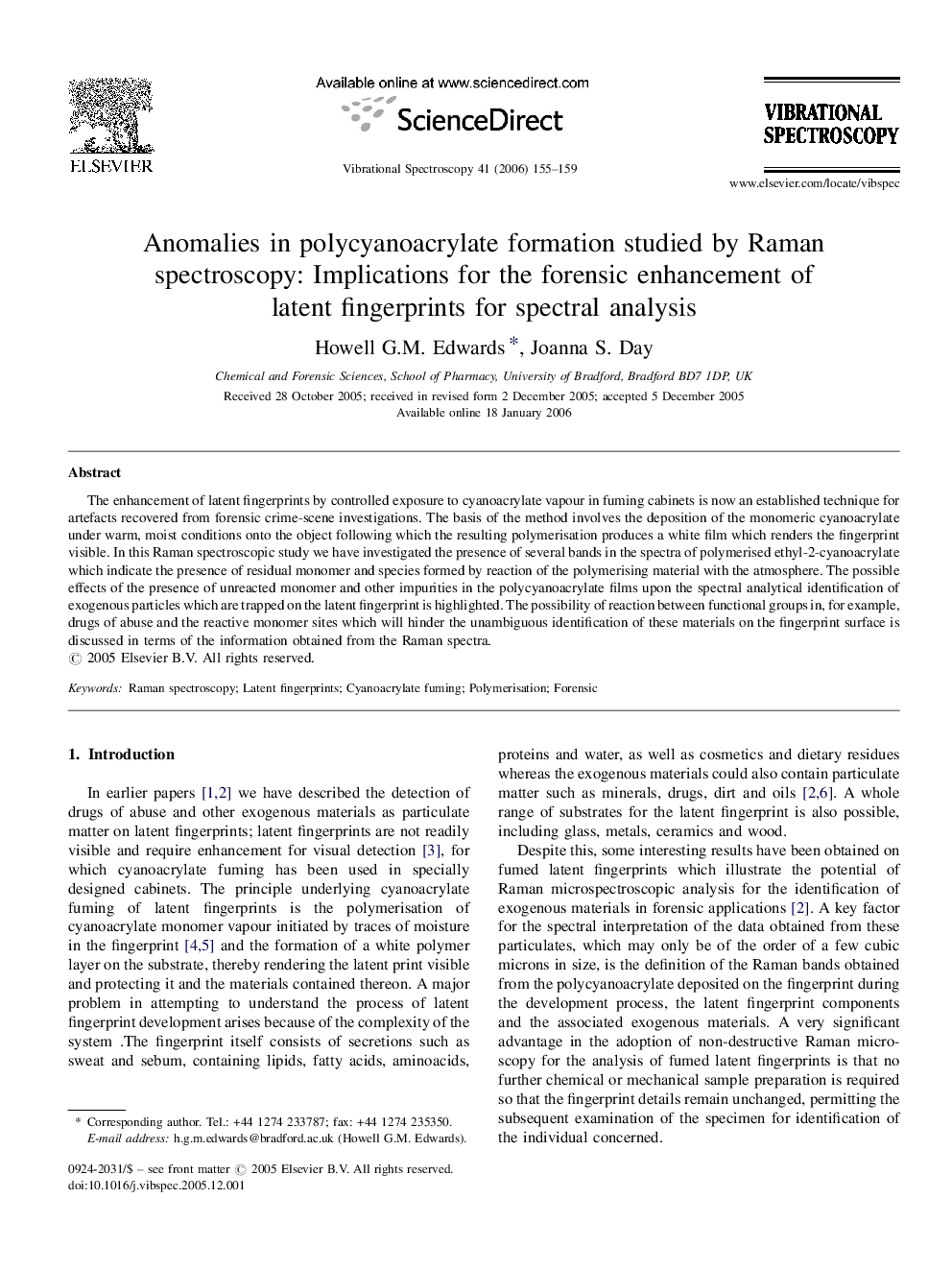| Article ID | Journal | Published Year | Pages | File Type |
|---|---|---|---|---|
| 1250121 | Vibrational Spectroscopy | 2006 | 5 Pages |
The enhancement of latent fingerprints by controlled exposure to cyanoacrylate vapour in fuming cabinets is now an established technique for artefacts recovered from forensic crime-scene investigations. The basis of the method involves the deposition of the monomeric cyanoacrylate under warm, moist conditions onto the object following which the resulting polymerisation produces a white film which renders the fingerprint visible. In this Raman spectroscopic study we have investigated the presence of several bands in the spectra of polymerised ethyl-2-cyanoacrylate which indicate the presence of residual monomer and species formed by reaction of the polymerising material with the atmosphere. The possible effects of the presence of unreacted monomer and other impurities in the polycyanoacrylate films upon the spectral analytical identification of exogenous particles which are trapped on the latent fingerprint is highlighted. The possibility of reaction between functional groups in, for example, drugs of abuse and the reactive monomer sites which will hinder the unambiguous identification of these materials on the fingerprint surface is discussed in terms of the information obtained from the Raman spectra.
